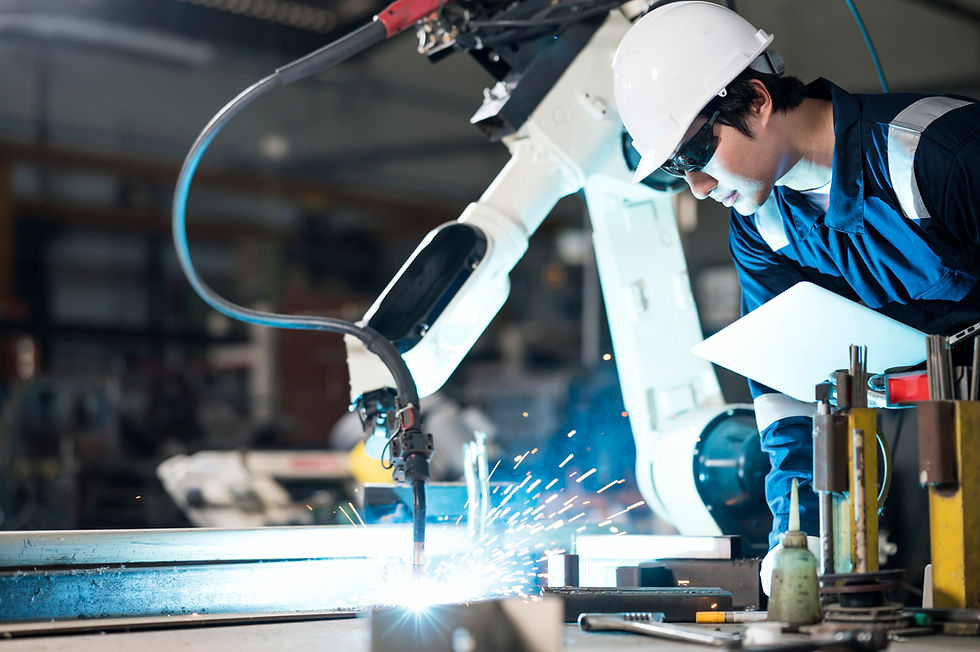Common Mistakes When Manufacturing Hardware in Asia
- nellalin
- Aug 3
- 5 min read
Updated: Aug 24

Table of Contents
Introduction
Why Focusing Only on the Cheapest Quote Is Risky
Do You Really Need Supplier Vetting and Factory Audits?
What Happens If You Skip Prototypes or Samples?
How Do Language Barriers and Cultural Norms Hide Problems?
The Danger of Taking a Hands-Off Approach
Unrealistic Pricing and MOQ Expectations
Why Weak Quality Control Can Be Fatal
Weak Contracts and IP Protection
Poor Timeline and Logistics Planning
Conclusion: Why Partner with Experts Like Rightway
Manufacturing in Asia offers startups cost advantages, a vast supplier base, and high production capacity. However, it is also filled with pitfalls that can derail even the most promising hardware startups. Forbes notes that 97% of hardware startups fail, often due to poor supply chain management, misaligned expectations, and manufacturing mistakes. Whether producing IoT devices, wearables, automotive electronics, or medical hardware, success depends on navigating this landscape effectively.
This article outlines the most common mistakes when manufacturing hardware in Asia—from China to Vietnam, Taiwan, and India—and provides actionable advice to avoid them. With insights from industry research and global case studies, plus our experience at Rightway (a hardware design and supply chain consultancy), this guide equips founders and engineers with the knowledge to transition from prototype to mass production smoothly.
1. Why Focusing Only on the Cheapest Quote Is Risky?
Choosing a supplier solely based on price is a classic mistake. While startups naturally seek cost savings, the cheapest quote often hides quality or reliability issues. Many low-cost suppliers cut corners on materials, lack robust quality systems, or may even be brokers masquerading as factories.
Total cost of poor quality (CoPQ)—including returns, warranty claims, and reputation damage—can far exceed upfront savings. Instead of chasing the lowest unit price, evaluate overall value: production capability, certifications, engineering support, and communication. A slightly higher price from a reliable factory often saves time and money in the long run.
2. Do You Really Need Supplier Vetting and Factory Audits?
Online platforms like Alibaba and Made-in-China list thousands of so-called “suppliers,” but many are trading companies or underqualified factories. Conducting rigorous due diligence and factory audits is not optional—it’s critical to verifying a manufacturer’s true capabilities.
A proper audit isn’t just a checklist; it requires seasoned professionals who understand manufacturing workflows, quality systems, and regional risks. Only experienced experts can accurately assess whether a factory has the right equipment, stable processes, qualified personnel, and compliance standards to meet your product needs.
In regions like Vietnam or China’s inland provinces, subcontracting is widespread. A primary supplier might outsource work to unverified workshops without your knowledge. Without an expert audit, you risk poor quality, missed deadlines, or even IP leakage.
If you can’t conduct a visit yourself, rely on trusted sourcing professionals or third-party inspectors with proven track records—not just any local agent. You need people who can ask the right questions, interpret what they see, and flag early warning signs. Factory auditing is a specialized skill—don’t leave it to chance.
3. What Happens If You Skip Prototypes or Samples?
Rushing into mass production without iterative prototyping is another trap. A “golden sample” allows you to validate both your design and the factory’s ability to deliver. However, be aware that samples are often hand-polished sales tools, not representative of mass production.
Conduct small pilot runs to confirm yields and assembly feasibility. Comparing samples from multiple vendors can also reveal differences in quality and responsiveness. A structured prototype-to-mass-production plan reduces the risk of expensive surprises later.

4. How Do Language Barriers and Cultural Norms Hide Problems?
In many Asian cultures, especially in China, maintaining face is a deeply ingrained norm. Suppliers may say “yes” to avoid embarrassment or conflict—even when they don’t fully understand the requirements or know they can’t meet them. As a result, problems are often concealed until they escalate into major setbacks.
To avoid last-minute surprises and project derailments, it’s crucial to bridge both the language and cultural gaps with proactive communication strategies. This includes:
Providing clear, detailed documentation with specs, drawings, and checklists.
Confirming comprehension by asking suppliers to explain your instructions back in their own words.
Having bilingual project managers or culturally fluent intermediaries involved—especially for technical discussions.
Most importantly, having a trusted local project manager who can visit the factory in person ensures real-time visibility into progress. On-site presence discourages misrepresentation and allows issues to be caught early—before they snowball into delays or defects. In complex cross-cultural supply chains, prevention is everything.
5. The Danger of Taking a Hands-Off Approach
Hardware startups sometimes assume that once the purchase order is placed, the factory will handle everything. In reality, overseas manufacturing requires active project management.
Check progress weekly during critical phases.
Be present during pilot runs and pre-shipment inspections.
Assign a dedicated production liaison or work with a consulting firm like Rightway to oversee daily operations.
A proactive approach signals to suppliers that you’re serious about quality and timelines.
6. Unrealistic Pricing and MOQ Expectations
Startups often underestimate the economics of Asian factories. Factories have minimum order quantities (MOQs) to maintain profitability, and aggressive price negotiation can backfire—suppliers may accept your terms but cut quality to compensate.
When small batches are necessary for testing, frame them as trial orders with a clear roadmap for scaling. Additionally, factor in total landed costs—including tariffs, customs, and logistics—rather than just ex-factory prices.
7. Why Weak Quality Control Can Be Fatal?
Skipping quality control (QC) and inspections is a costly mistake. A batch of defective units can ruin both margins and brand reputation.
Always perform pre-shipment inspections (random sampling of 5–10% of units).
Use first article inspections during early production runs.
Define a QC checklist with clear acceptance criteria.
Even large brands like Samsung or Apple have suffered from quality failures; for startups, rigorous QC is non-negotiable.

8. Weak Contracts and IP Protection
Vague contracts or lack of IP safeguards leave startups vulnerable. Your contract should cover specifications, delivery schedules, penalties, and IP ownership.
Use NNN agreements (Non-disclosure, Non-use, Non-circumvention) instead of generic NDAs for better enforceability in China.
Register your trademarks and patents in both your sales markets and manufacturing countries.
Payment terms (e.g., 30% deposit, 70% after inspection) also help maintain leverage over suppliers.
9. Poor Timeline and Logistics Planning
Hardware schedules are often overly optimistic. Industry data suggests that 30–90% of hardware projects experience delays, often due to component shortages, tooling issues, or mismanaged logistics.
Key considerations:
Plan around seasonal peaks like Chinese New Year, which can halt production for weeks.
Build 2–3 weeks of buffer for unforeseen delays.
Factor in shipping times (4–6 weeks by sea) and customs clearance.
Air freight can save time but devastate margins if used reactively.
Conclusion: Partnering with Experts Like Rightway
Avoiding these mistakes requires meticulous planning, cultural understanding, and on-the-ground oversight. Startups that succeed in Asia prioritize quality over the cheapest price, vet their suppliers, invest in prototyping, and maintain rigorous QC and contracts.
This is where Rightway can be a game-changer. As a hardware design and supply chain consultancy, we:
Provide local expertise across Asia—including China, Taiwan, Vietnam...etc.
Help startups precisely match with qualified, small-batch-friendly ODM/OEM partners.
Manage end-to-end quality assurance, logistics, and compliance to reduce risks and delays.
Offer boots-on-the-ground support, enabling us to visit and audit factories before production and conduct product inspections after manufacturing.
Leverage years of experience to help clients avoid costly missteps and wasted efforts when navigating the complex Asian manufacturing landscape.
With Rightway by your side, you don’t have to guess your way through hardware production. You gain a trusted partner who ensures your innovative product is built right, the first time—on spec, on time, and on budget.




Comments